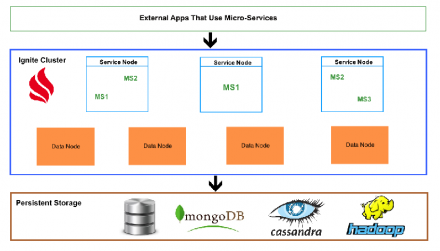GridGain Blog
When it comes to observing the technology industry, nothing is more exciting and satisfying than seeing an idea become a world-changing reality. It starts with a fledgling solution, then an interesting alternative worth experimenting with, then a successful and award-winning product, and finally the driver of a major shift in how things get done. That is what we are seeing with the GridGain and…
Apache® Cassandra™ is a popular NoSQL database that does certain things incredibly well. It can be always available, with multi-datacenter replication. It is also scalable and lets users keep their data anywhere. However, Cassandra is lacking in speed. Cassandra is not fast enough for some of today’s extreme OLTP workloads because it stores data on disk. Cassandra also shares certain limitations…
Spread betting has been one of the major global growth markets since the financial crisis of 2008. There are several reasons for this, including preferential tax treatment, low entry and transaction costs, wider bid-offer spreads, less regulation, and a diverse universe of products and options.
However, spread betting can be a very risky business. To limit risk and increase the rewards from…
Asset and wealth management continues to be one of the most attractive segments of the financial services industry, promising profitability and growth in a world of financial uncertainty. However, most financial institutions are observing a shift in their client demographics. The new client base demands different ways of placing and managing their financial holdings. As a result,…
Financial fraud is now a multi-billion-dollar business and growing rapidly, with Juniper Research predicting that online fraud alone will climb from $10.7 billion in 2015 to 25.6 billion in 2020. Financial fraud prevention is critical as failure to detect and prevent fraud can harm the reputations of financial firms and reduce confidence in the industry as a whole.
Protecting their…
This blog post is the second one in the series of articles that provides a step-by-step guide on how to build a fault-tolerant and scalable microservices-based solution with Apache Ignite Service APIs.
In the first post one of the possible architectures was presented and explained as a system consisted of the following layers:
Apache Ignite Cluster Layer
Persistent Storage Layer
Layer…
Misys, a Leading FinTech Firm, Uses the GridGain In-Memory Computing Platform
Misys, a London-based financial services software (fintech) company, is relying on the GridGain Enterprise Edition to enable high performance, real-time data processing of massive amounts of trade and transaction date. Misys solutions are used by 48 of the world's largest 50 banks.
The Misys financial technology (…
Bitcoin and Blockchain technology has driven a lot of discussions around its possible use within the banking and financial services industries. According to analysts, 80% of top banks have launched experimental Blockchain projects. While an estimated 15% of these banks will likely launch new Blockchain-based services into the mass market in the next 12-24 months, an enormous investment in new…
On Wednesday December 7, 2016, I hosted a webinar with Peter Zaitsev, CEO and cofounder of Percona, in which we discussed how you can supplement MySQL with Apache® Ignite™.
MySQL® is an extremely popular and widely used RDBMS. Apache Ignite is the leading open source in-memory computing platform which can provide speed and scale to RDBMS-based applications. Apache Ignite is inserted…
This informative webinar provided an overview of different potential performance problems and bottlenecks that could occur when using Apache® Ignite™ and techniques for tuning Apache® Ignite™. This included tips on basic cache operations, data loading, affinity collocation, SQL query tuning and JVM tuning. For additional information, including code examples, please see the complete recording of…









